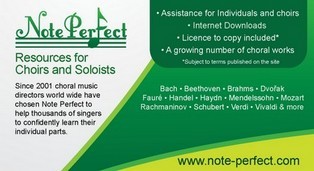Herr Christ Der Einig BWV 022 (Bach)
Organ
Johann Sebastian Bach
View or download the score
Willem van Twillert, Grote Kerk, Epe, The Netherlands
“Herr Christ, der einig Gotts Sohn” (Lord Christ, the Only Son of God) is a Lutheran hymn by Elisabeth Cruciger. Printed in 1524 in the Erfurt Enchiridion, together with 18 hymns by Martin Luther, it is one of the oldest Lutheran hymns. The text combines Lutheran teaching with medieval mysticism. It has been the basis of musical settings such as Bach’s chorale cantata Herr Christ, der einge Gottessohn, BWV 96.
Apart that Elisabeth Cruciger’s authorship has been ascertained, little or nothing is known about the genesis of “Herr Christ, der einig Gotts Sohn.” The notion that it was modelled after the Christmas hymn “Corde natus ex parentis” (“Of the Father’s Heart Begotten”), repeated, for instance, in Bach-scholarship, lost traction in hymnology. The melody of Cruciger’s hymn has some similarity with the tune of “Mein Freud möcht sich wohl mehren” (“My Joy Will Increase”), a secular love song known from the Lochamer-Liederbuch (1455).
“Herr Christ, der einig Gotts Sohn” was first published in 1524, both in the Erfurt Enchiridion and in Johann Walter’s choral hymnal Eyn geystlich Gesangk Buchleyn in Wittenberg. In the Enchiridion, the hymn appeared with 25 others, 18 by Martin Luther, three by Paul Speratus, one or two by Justus Jonas, one by Erhard Hegenwald, and one attributed to Jan Hus, making this the only hymn in the Enchiridion by a female author.
Titled “Eyn Lobsanck von Christo” (A song of praise of Christ) in the hymnal Enchiridion, the song is a praise of Jesus as the son of God and saviour of man. The hymn text combines Lutheran teaching with medieval mysticism which the author experienced as a nun before she converted. Cruciger writes in the third stanza, for example: “so, daß wir hier mögen schmecken dein Süßigkeit im Herzen und dürsten stets nach dir” (that we may here taste your sweetness in our hearts and constantly thirst for you). It was the first Protestant chorale to use mystical images, imitated in the Jesus mysticism of later generations. Philipp Nicolai referenced the hymn in his own hymn “Wie schön leuchtet der Morgenstern”; both authors use the title “Morgenstern” (morning star) for Jesus.
“Herr Christ, der einig Gotts Sohn” has been associated with Epiphany, the first and second Sundays after Epiphany, Annunciation, the 18th Sunday after Trinity, Advent, and Christmas. The hymn has been included in over 30 hymnals. It appears as No. 67 in Evangelisches Gesangbuch. The hymn tune of “Herr Christ, der einig Gotts Sohn” (Zahn No. 4297a) was later also used for “Herr Gott, nun sei gepreiset”, the content of which has no relation to that of Cruciger’s hymn. Other hymns sung to the same tune include “Wenn meine Sünd’ mich kränken”, “Dich bitten wir deine Kinder”, “O Vater aller Frommen” and “Gib zum Früchten der Erden.”
Musical settings
Hans Leo Hassler composed a four-part setting in 1608, Johann Hermann Schein set the song for two sopranos and basso continuo in 1622, and for four voices and basso continuo in 1627. Samuel Scheidt wrote a four-part setting in Görlitz in 1650.
Johann Sebastian Bach used the hymn as the base for his chorale cantata Herr Christ, der einge Gottessohn, BWV 96 (1724), and used single stanzas in other cantatas. Bach composed an organ prelude, BWV 601, part of his Orgelbüchlein.
Georg Philipp Telemann composed two cantatas, both on a libretto by Erdmann Neumeister, in 1722 and 1758.
Several composers wrote organ preludes, including Dieterich Buxtehude, Johann Hermann Schein and Jan Pieter Sweelinck.
This article is licensed under the GNU Free Documentation License. It uses material from the Wikipedia article "Metasyntactic variable."
Comments
Please make comment on the score and music here.
- Keep to the topic of the music on this page. Be polite, comments are moderated
- Tell us where you have used this music and if your performance is published on the internet, please put a link to it in the website field
- Give performance advice/suggestions
- Ask others questions about performance techniques
- Please do not make requests for music on this page
- Your email address is not published
0
reviews
Our sponsors
Other Organ Music
